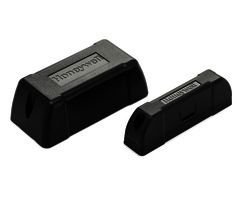Wireless Outdoor Door Alarm Sensors



Wireless outdoor door alarm sensors are generally used by people to monitor the exterior of their property. Many outdoor structures have doors or openings that homeowners want to protect. This can include things like fences, patio doors
What makes wireless outdoor door alarm sensors unique is their rugged and weatherproof designs. Since these devices need to operate in outdoor settings, they must be able to withstand any heavy rain, wind
Like most wireless sensors, wireless outdoor door alarm sensors communicate with security panels using RF communication signals. However, many outdoor alarm sensors feature communication signals that are somewhat stronger than those of indoor sensors. This is because the sensor will typically be placed outdoors, and it will need to communicate with a security system that is located inside the house. This means that it may have to pass through many walls and structures that may disrupt the signal. A user can also add a wireless repeater to help ensure that the signal from the sensor reaches the system. Most wireless repeaters will essentially double the range of the sensor.
Wireless outdoor door alarm sensors usually operate in the same way as any other door sensor. These devices typically consist of both a sensor and an added magnet. We generally recommend that the sensor itself be placed on the stationary portion of the door or fence and the magnet on the moving portion within about a half inch of the sensor. This will prevent the sensor from being damaged when the door or fence is opened, and it will ensure that the magnet is in close enough contact with the sensor. Whenever the door or fence is opened, the magnet will separate from the sensor, and the internal reed switch of the sensor will be activated. This will cause a fault on the zone that the sensor is programmed to. When this happens, the programmed response with the system will take place. This response can be anything from sounding a siren, requesting police dispatch or even activating a Z-Wave scene. To change this programming, the user will need to adjust the Response Type for the zone on the panel. This can be done by accessing programming using the system’s installer code.




